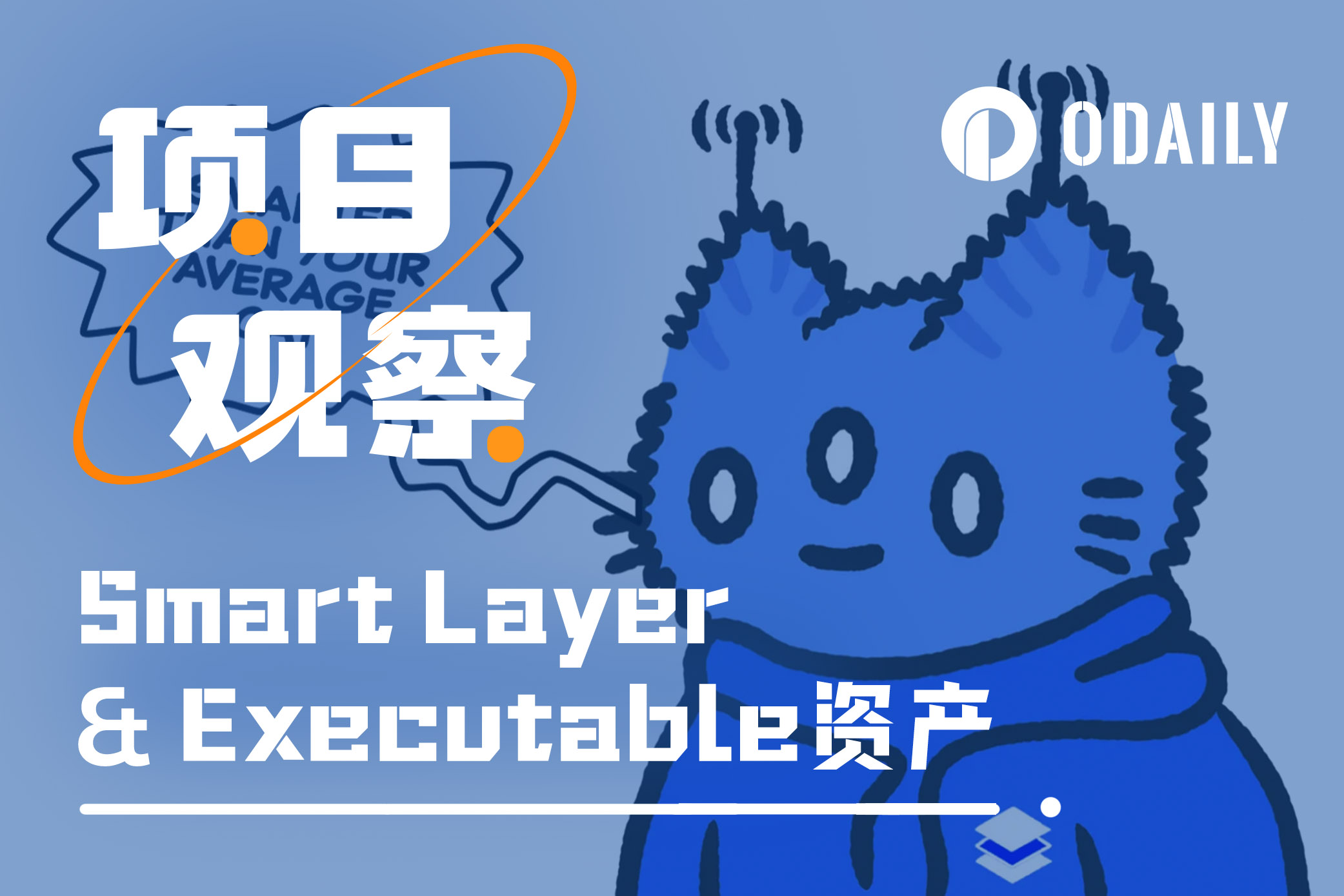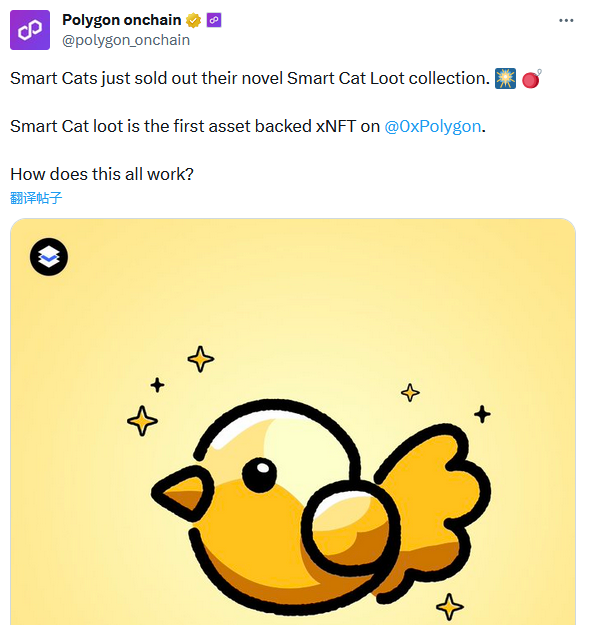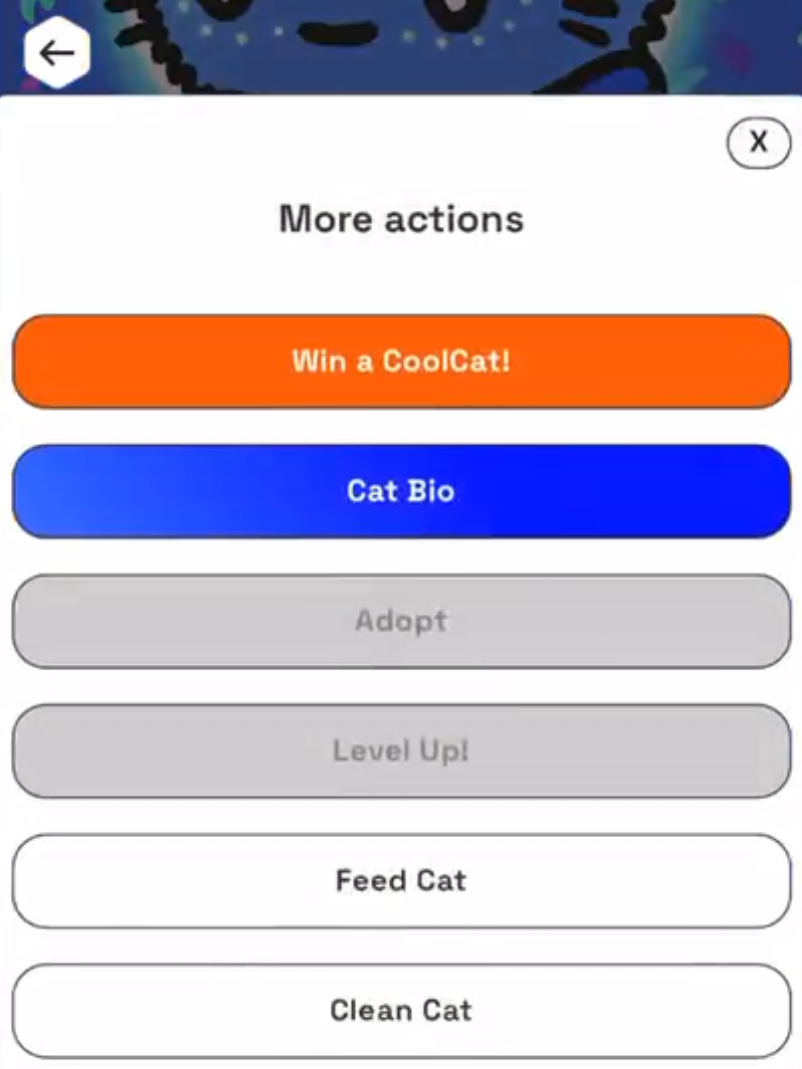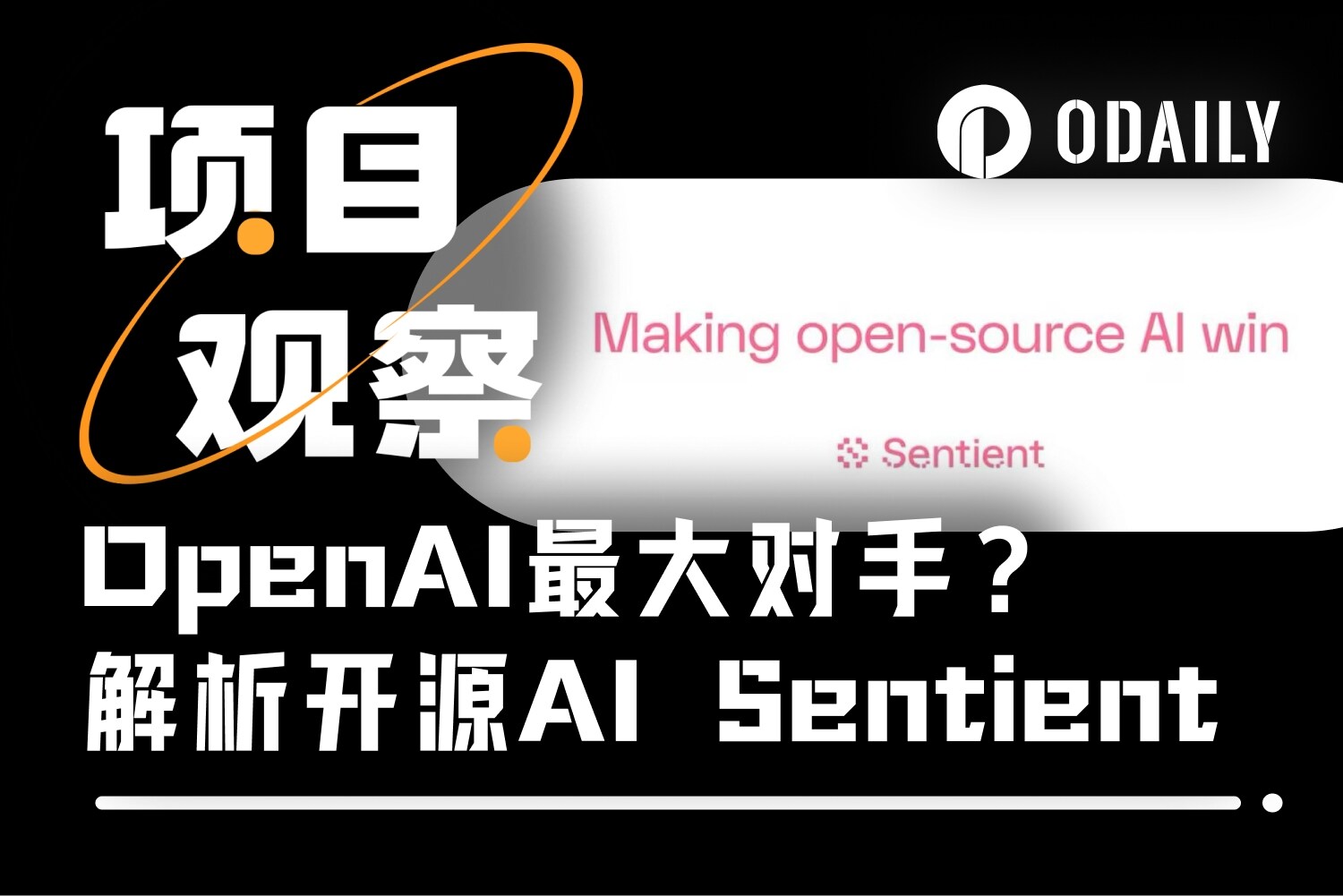The new paradigm of the entire asset cycle: understand Smart Layer and Executable assets in one article
Original - Odaily
Author - Nan Zhi

introduction
Recently, Polygon published an article on the
What is xNFT? Its full name is Executable NFT, which means that in addition to being an asset, it alsoWith built-in runnable code, it has high practicality and stronger scalability than traditional NFTs;Similarly there is Executable Token, which has the same characteristics.

Smart Cat Loot adopts an innovative Burn and Return mechanism and dynamic pricing strategy. NFT holders can burn their NFT at any time and recover the casting cost. In addition, as the transaction volume in the secondary market increases, the price of recycling will also increase accordingly.
The above is from Smart Cat LootAsset side characteristics, the toy xNFT can also interact with Smart Cats issued by Smart Layer to earn points and unlock community rewards. The interaction does not require users to visit a new website or download additional DApp, and the interaction can be performed only in the wallet. operate.

The above Smart Cat Loot features are implemented based on the Ethereum standard ERC-5169 and TokenScript.ERC-5169 allows tokens to be linked to external scripts, turning them into multifunctional assets. TokenScript is a programming interface for tokenization that abstracts token information, access methods and UI presentation, providing a higher-level interface that greatly improves the circulation and integration capabilities of tokens. In addition, TokenScript Allowing developers to define the characteristics and operations of their tokens, such as transferability, helps enable interoperability between tokens without requiring updates to DApps or smart contracts.
In short, Smart Layer is launched through ERC-5169 and TokenScript technology.Executable Token/NFT greatly improves the scalability of assets, not only improves user experience,It also brings a new paradigm for asset development, distribution and application., aiming to bring innovation to the production and consumption paths of DeFi, brand Loyalty and Web3 games.
New paradigm for assets, new experience for applications
New answers to app distribution and management
In the usual scenarios of Web3, end users often need to face a wide variety of DApps. Especially when moving to new chains or facing new asset types, users face a series of problems throughout the cycle:
Assets are only payment and circulation media. The circulation events themselves usually need to be completed with the help of other applications and markets. These DApps need to be developed for assets, and usually require extremely high customer acquisition costs to distribute DApps to users. For example, recent niche inscriptions can usually only be manually traded one by one through OTC, and require double deposits and a service fee of 1% -3%, which is extremely costly;
For new applications, users need to pay the cost of searching and learning. In particular, Google phishing websites and counterfeit accounts on the X platform are currently appearing frequently, making it easy for inexperienced users to be deceived by various phishing scams;
Users face post-management issues, including the management of the assets themselves and security risk prevention. When users have assets on dozens of chains, and each chain needs to save at least one swap, loan, and cross-chain application, the management cost increases exponentially. In addition, attacks occur frequently in the Web3 domain, and every application is at risk of being hacked, requiring users to pay attention and verify.
For example, the fundamental key to the rise of OKX Web3 Wallet in 2023 is to solve the above-mentioned information cost and management cost problems between users and DApps. It reduces information costs by directly connecting project parties and users, and collaborates with projects to complete multi-terminal adaptation to reduce learning costs. The aggregation platform itself is equivalent to a security endorsement.
Executable Token/NFT represents another lower-cost and more direct way to solve the above problems.:
By directly building basic needs such as Earning and Swap into assets, as well as other more distinctive functions, users and applications are naturally connected, and information costs are extremely low;
The application no longer needs to carry out multi-terminal adaptation. Users can directly perform the required operations in the wallet, which simultaneously reduces development and learning costs;
In addition, the built-in program written by the project party in the asset means that users no longer need to check the accuracy of DApp and manage batches. What you see is what you get, and you can use it anytime.
A new asset paradigm led by Executable Token
In the earliest blockchain era, the various chains and coins at that time could only do one thing -transfer, the project party gathers a group of miners to issue assets and run transfers, and each chain has only one asset. The gradually maturing market has given rise to needs other than exchange media - programming needs, and accordingly some hard-coded smart contract projects have been born, which cannot be upgraded online, and each upgrade requires miners to fork.
Then Ethereum came into being and introduced smart contracts, whose Turing completeness ensured sufficient flexibility.Developers can implement complex calculations on it, not just simple asset transfers. After experiencing the ICO era and DeFi summer, smart contracts have become an indispensable and standard part of the blockchain world.
However, the existing blockchain system focuses more on the financial aspect. Each ecology has built a transaction and lending system on its own, but it only operates in a self-consistent and cyclical manner within the system. As the demand for blockchain compliance and mass adoption continues to rise,New scenarios other than transfers and finance are beginning to emerge, and the old technical system is not enough to meet them, and corresponding underlying needs are born.
What are the disruptive public needs of Web3? The most important of these is the ownership of information. Under the Web2 model, user data is monopolized by each platform, leading to information isolation and high friction costs. On the one hand, users need to repeatedly complete their personal information when transferring between platforms, and platforms also need to build user portraits from scratch to ensure accurate services. On the other hand, users will be concerned about the leakage of personal privacy information, and platforms are also teetering on the edge of building data barriers and obtaining information through gray channels.In summary, Web3 thrives by breaking down data silos to achieve integration, but its development is limited by the lack of security and privacy protection.。
Therefore, Smart Layer created a unique solution, Executable Token, based on TokenScript technology, to solve integration, privacy and trust challenges in digital environments. Executable Token not only carries information and can represent a wide range of assets and rights, but also has rich features and can perform complex interactions with other tokens and systems (i.e., the Executable Token/NFT features mentioned above).
Use an official case to experience the charm of Executable Token:
Users can create a Token for a specific car based on the unique identification of the vehicle in each country, which represents the users ownership of the car;
Users with usage rights can unlock the corresponding functions of the car, such as digital keys used to start and lock the car, obtain vehicle location and vehicle status data, and other real-world functions;
For third-party companies, they can obtain corresponding vehicle open information. For example, insurance companies can more accurately and cost-effectively determine whether users have vehicle insurance needs, reducing customer acquisition costs and communication costs with users, etc.;
For ownership, users transaction methods can become highly standardized, and developers can access the vehicle attributes that users are most concerned about when designing Tokens from the beginning, making online purchase decisions more effective. Transaction events can also be connected to official (such as vehicle administration) systems, eliminating the time of completing various procedures;
Similarly, vehicle ownership digitized using Executable Token can perform various operations on the chain, such as lending funds on NFT lending platforms, using fragmented protocols to share ownership, and the practicality and utilization efficiency of assets are greatly improved. promote.
Take the hot concept of RWA (Real World Assets) in 2023 as an example. The RWA project creates a special purpose vehicle (SPV) from real estate, securities, stocks and other items, and then distributes them through tokenization.
For bond products, the income model and data are relatively simple. Using traditional ERC 20 for design can also complete asset correlation and income distribution. However, more complex underlying assets such as real estate require completely different technical implementations. For example, all real estate operating income and costs are different. Asset buyers need to understand multiple layers of complex data such as geographical location, housing status, and operating status. The assets also involve multi-party taxation and other issues. If they still rely on manual off-chain coordination, management, and calculation, Then it is finally transferred to the assets on the chain, which is expensive and loses the meaning of RWA. Through ERC-5169 and TokenScript, and access to technologies such as edge computing, off-chain and on-chain data can be collated in real time, accurately and effectively.
In summary, Executable Token provides a brand-new asset development and application model, provides the corresponding underlying technical foundation, and allows the features and advantages of Web3 to be fully utilized.
Reshape the brand and users’ production and consumption channels
As mentioned above, the unique solution provided by Smart Layer can break information silos, reshape the relationship between brand service providers and users, and fundamentally change the production and consumption paths between the two:
It solves the problem of accurately finding users. User consumption footprints are clearly visible. Brands can conduct business analysis based on accurate data and accurately match services with target users.
Open and license-free delivery means that the project team will focus more on the quality of the product. On the basis of a clear user group, only better services can attract users. Especially in the Web3 model, user switching costs are extremely low. Only projects that continuously and proactively provide users with sufficient excellent value can maintain user stickiness.
For example, SushiSwaps vampire attack on Uniswap and LooksRares vampire attack on OpenSea. The former once threatened Uniswaps status and forced it to undergo major changes and development, while the latters products and services failed to subvert OpenSea and declined rapidly after its peak.
The ERC-5169 promoted by Smart Layer links assets to external scripts, eliminating the problem that on-chain operations are too expensive for some users, and is more conducive to large-scale adoption.
This transformed relationship, called Open Loyalty, aims to further leverage the advantages of Web3 and drive new narratives and development in the market.
New ways to acquire customers and new experiences for games
Executable game NFTs can include various mini-games and interactive tasks, and users can interact with these elements in their wallets before the complete game is built. Its most fundamental feature is that it integrates assets and DApps, changing the way for mini-games to acquire customers. Users do not need to install an additional DApp, but directly accept and interact with an asset that has game functions. It can be compared to a WeChat applet, which greatly improves user acceptance by shortening the path between users and applications.
On the other hand, Executable Token/NFT is not only a game asset on the chain, but also can be combined with real-life operations, adding a new level to game play and player interaction, through scripts linked to external information, combined with AR, VR and even AI technology , achieving exponential expansion of possibilities.
Summarize
The Executable Token/NFT launched by Smart Layer brings a new asset paradigm and reshapes the entire asset cycle process from production, distribution to operation. The scalability it provides can be combined with various new technologies, new scenarios, The combination of new processes provides unlimited potential for asset development.



